PSALTER-HOURS, use of Rome, in Latin, ILLUMINATED MANUSCRIPT ON VELLUM [Naples, 1470] 101 x 73mm. 282 + 10 later leaves inserted before final folio: 1 1 2, 2 2, 3-26 8, 27 4, 28-32 8, 33 6, 34 2, 35 4, 36 2, 37-38 8, 39 8(final leaf now pasted to endleaf), lacking a bifolium once ff.ccxxxxi/ccxxxxii between gatherings 37 and 38, catchwords in centre lower margin of final versos, original foliation running to ccliiii on f.280, modern pencil foliation in lower right corner followed here, 18 lines written in brown ink in a small round gothic bookhand between two verticals and 19 horizontals ruled in grey, justification: 52 x 36mm, rubrics of red, text capitals and letters of foliation alternately of blue and burnished gold with flourishing respectively of red and grey or lilac in the Hours of the Virgin, two-line initials of burnished gold on grounds of blue with infills of crimson both with white penwork decoration, ONE FOLIATE AND SIX HISTORIATED INITIALS WITH MARGINAL SPRAYS with leaves and flowers on hairline tendrils and interspersed with golden disks, FOUR FULL-PAGE MINIATURES AND FIVE HISTORIATED INITIALS ACCOMPANIED BY FULL-PAGE BORDERS of the same forms within inner and outer fillets of burnished gold (loss of pigment from the face of Christ in the border of f.15 and from Gabriel's robe f.220v, slight rubbing to gold of some borders). Panelled green morocco gilt, signed PEDROCCHI LUIGI LEGATORE IN CLUSONE (outer corners of lower cover worn). Modern mottled calf box. PROVENANCE: 1. A member of the Abrignano family, settled in Sicily from the 14th century and holders of the Sicilian baronies of Regalmuto and Saline di Trapani: their coat of arms, gules , a three-turreted castle or , in the lower border of f.15. The style of illumination is Neapolitan and the Calendar contains in red the feast of St Juliana (16 February), who was venerated in Naples, so that it seems likely that the manuscript was made in that city. The preponderance of Franciscan feasts in red in the Calendar may indicate the devotional allegiance of the first owner. 2. The indices and additional canticles inserted at the end of the volume in a late 17th- or early 18th-century Italian hand point to its ownership by a cleric. 3. In the 19th century the manuscript was in Clusone, a town to the north-east of Bergamo in Lombardy, where it was bound. 4. Description from Berlin auction catalogue (1935, lot 7) inside box. 5. J.W. Cappelen, Antikvariat, Oslo: his name, the date '1958' and the price 'Kr 4.700' written on the back of a modern engraved bookplate inside lower cover. CONTENT: Calendar ff.1-12v; Psalter and Canticles ff.15-218v; Office of the Virgin ff.221-245v; Mass to the Virgin ff.246-250; Hours of the Cross ff.253-256; Seven Penitential Psalms and Litany ff.259-266v; Office of the Dead ff.267-280v; additional items written in a late 17th- or early 18th-century hand ff.281-final endleaf: index, including a section giving folio numbers for the psalms to be sung at vespers and compline on Sunday, and the individual canticles f.281; additional canticles ( Salmi mancavano al presente Ufficio ) ff.282 to final endleaf. Each full-page miniature is on the verso of the second leaf of a bifolium that is otherwise blank. This is an extremely carefully and thoughtfully produced little prayerbook. Combined Psalter-Hours of this date are rare: in general they are seen as a halfway house on the march toward the Book of Hour's overwhelming supremacy as an aid to private devotion. But this is a sophisticated departure from the usual pattern. It combines a full Psalter -- complete with tituli characterising individual psalms -- with all the elements customary in an Italian Book of Hours. They are all accommodated in a single volume by the judicious provision of foliation: no text needs duplicating, a reference suffices. Thus, for example, the Seven Penitential Psalms take up just one recto and three lines of the verso, and comprise no more than the relevant
PSALTER-HOURS, use of Rome, in Latin, ILLUMINATED MANUSCRIPT ON VELLUM [Naples, 1470] 101 x 73mm. 282 + 10 later leaves inserted before final folio: 1 1 2, 2 2, 3-26 8, 27 4, 28-32 8, 33 6, 34 2, 35 4, 36 2, 37-38 8, 39 8(final leaf now pasted to endleaf), lacking a bifolium once ff.ccxxxxi/ccxxxxii between gatherings 37 and 38, catchwords in centre lower margin of final versos, original foliation running to ccliiii on f.280, modern pencil foliation in lower right corner followed here, 18 lines written in brown ink in a small round gothic bookhand between two verticals and 19 horizontals ruled in grey, justification: 52 x 36mm, rubrics of red, text capitals and letters of foliation alternately of blue and burnished gold with flourishing respectively of red and grey or lilac in the Hours of the Virgin, two-line initials of burnished gold on grounds of blue with infills of crimson both with white penwork decoration, ONE FOLIATE AND SIX HISTORIATED INITIALS WITH MARGINAL SPRAYS with leaves and flowers on hairline tendrils and interspersed with golden disks, FOUR FULL-PAGE MINIATURES AND FIVE HISTORIATED INITIALS ACCOMPANIED BY FULL-PAGE BORDERS of the same forms within inner and outer fillets of burnished gold (loss of pigment from the face of Christ in the border of f.15 and from Gabriel's robe f.220v, slight rubbing to gold of some borders). Panelled green morocco gilt, signed PEDROCCHI LUIGI LEGATORE IN CLUSONE (outer corners of lower cover worn). Modern mottled calf box. PROVENANCE: 1. A member of the Abrignano family, settled in Sicily from the 14th century and holders of the Sicilian baronies of Regalmuto and Saline di Trapani: their coat of arms, gules , a three-turreted castle or , in the lower border of f.15. The style of illumination is Neapolitan and the Calendar contains in red the feast of St Juliana (16 February), who was venerated in Naples, so that it seems likely that the manuscript was made in that city. The preponderance of Franciscan feasts in red in the Calendar may indicate the devotional allegiance of the first owner. 2. The indices and additional canticles inserted at the end of the volume in a late 17th- or early 18th-century Italian hand point to its ownership by a cleric. 3. In the 19th century the manuscript was in Clusone, a town to the north-east of Bergamo in Lombardy, where it was bound. 4. Description from Berlin auction catalogue (1935, lot 7) inside box. 5. J.W. Cappelen, Antikvariat, Oslo: his name, the date '1958' and the price 'Kr 4.700' written on the back of a modern engraved bookplate inside lower cover. CONTENT: Calendar ff.1-12v; Psalter and Canticles ff.15-218v; Office of the Virgin ff.221-245v; Mass to the Virgin ff.246-250; Hours of the Cross ff.253-256; Seven Penitential Psalms and Litany ff.259-266v; Office of the Dead ff.267-280v; additional items written in a late 17th- or early 18th-century hand ff.281-final endleaf: index, including a section giving folio numbers for the psalms to be sung at vespers and compline on Sunday, and the individual canticles f.281; additional canticles ( Salmi mancavano al presente Ufficio ) ff.282 to final endleaf. Each full-page miniature is on the verso of the second leaf of a bifolium that is otherwise blank. This is an extremely carefully and thoughtfully produced little prayerbook. Combined Psalter-Hours of this date are rare: in general they are seen as a halfway house on the march toward the Book of Hour's overwhelming supremacy as an aid to private devotion. But this is a sophisticated departure from the usual pattern. It combines a full Psalter -- complete with tituli characterising individual psalms -- with all the elements customary in an Italian Book of Hours. They are all accommodated in a single volume by the judicious provision of foliation: no text needs duplicating, a reference suffices. Thus, for example, the Seven Penitential Psalms take up just one recto and three lines of the verso, and comprise no more than the relevant
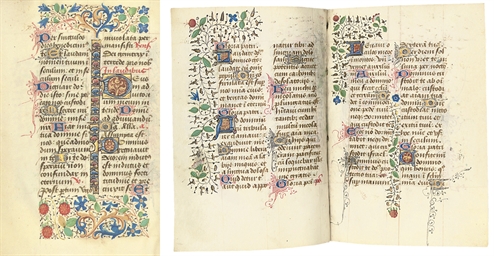
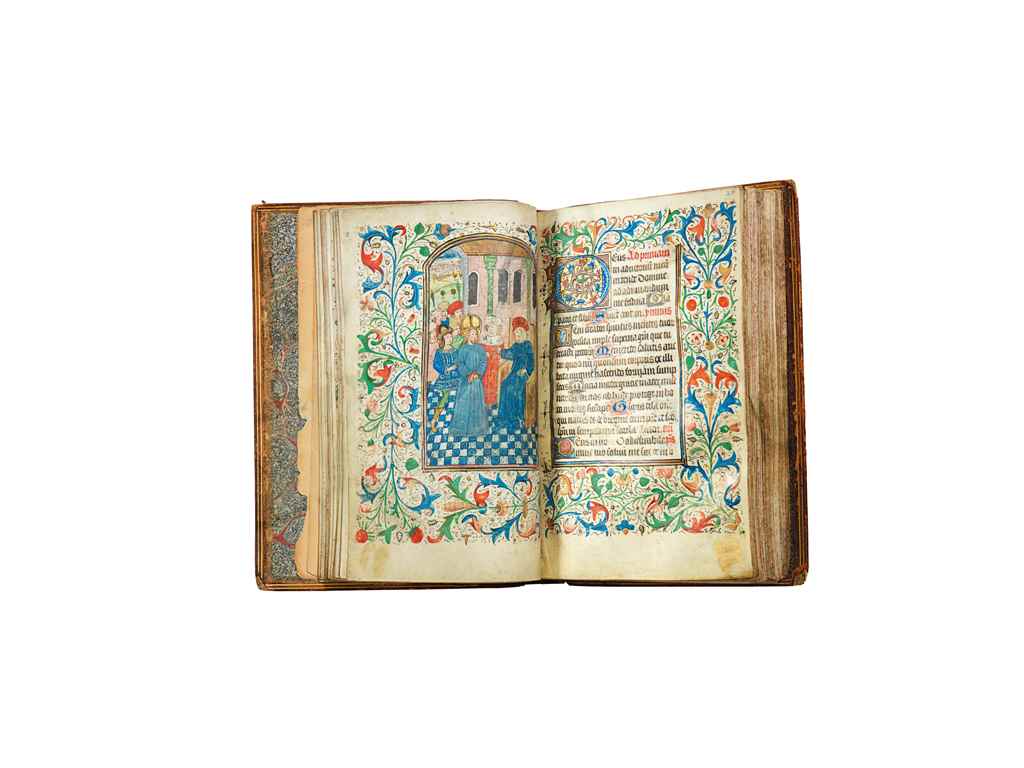

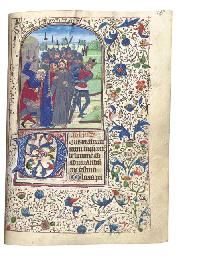

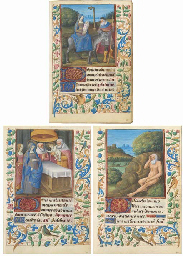
.jpg)





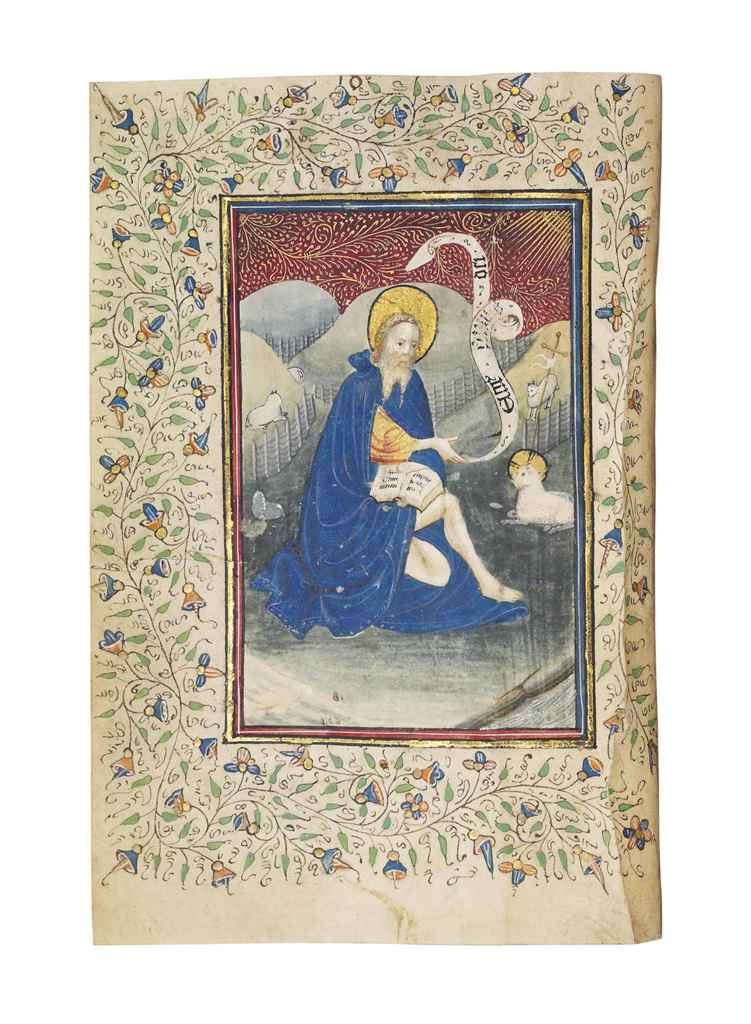
Try LotSearch and its premium features for 7 days - without any costs!
Be notified automatically about new items in upcoming auctions.
Create an alert